What is a Model Triangle?
A Model Triangle, often referred to as the PQM triangle is a reasoning tool.
Our MBER curriculum uses a triangle with vertices phenomenon, question and model as a reasoning framework for students to describe and navigate their learning. In the classroom, we often begin with an exploration of a phenomenon (P vertex of the triangle), students will then generate questions (Q vertex) and finally, students will build a model (M vertex) that answers and explains the questions and the phenomenon presented when we started the model triangle. This typical sequence often forms the anchor for a unit: once we've established the phenomenon, bounded our wonderings through a specific agreed-upon question, and offered our initial ideas, we have a place to return to when trying to decide if we've made progress in figuring things out.
Many times we will start a unit navigating from P to Q to M, but sometimes we will have good reason to go the other direction: a model can generate new questions and lead us to explore new phenomena!
This is just what scientists do in their profession—they build models that explain phenomena. This is what we want for our students, to participate in the practice of science and learn through the process of model-generation. As teachers, our responsibility is to guide them in the practice of science. Moving around the PQM triangle holds many parallels to the practice of science outside the classroom.
Read through the series of graphics below to visualize how moving around the triangle describes the work we are engaging in, developing models to explain phenomena.
Note: We also use the term "model triangle" in our curriculum to refer to several days--or weeks--of instruction focused on developing a model for reasoning about biological phenomena. For example, the unit on Natural Selection is sometimes referred to as the "Model Triangle for Natural Selection".
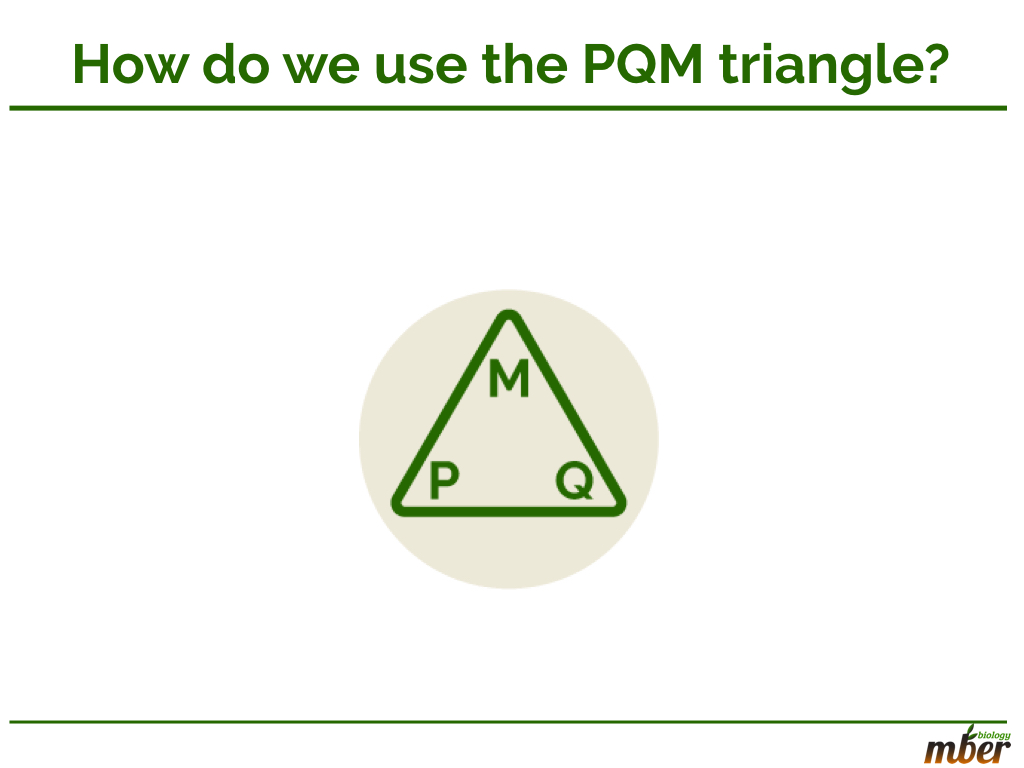
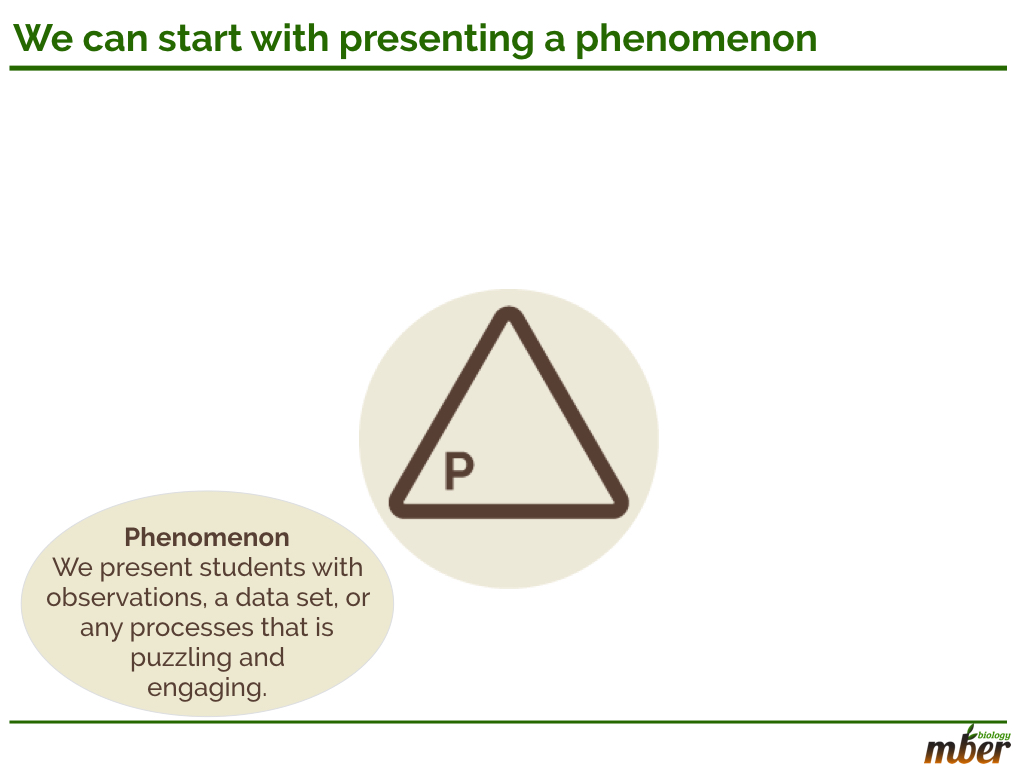
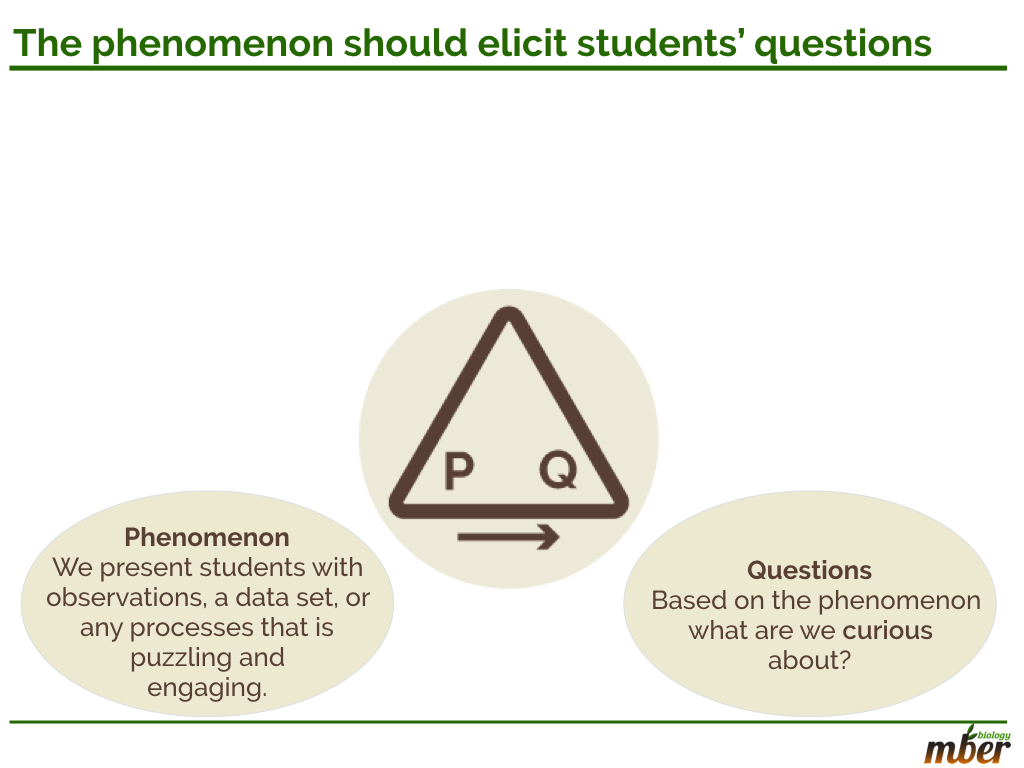
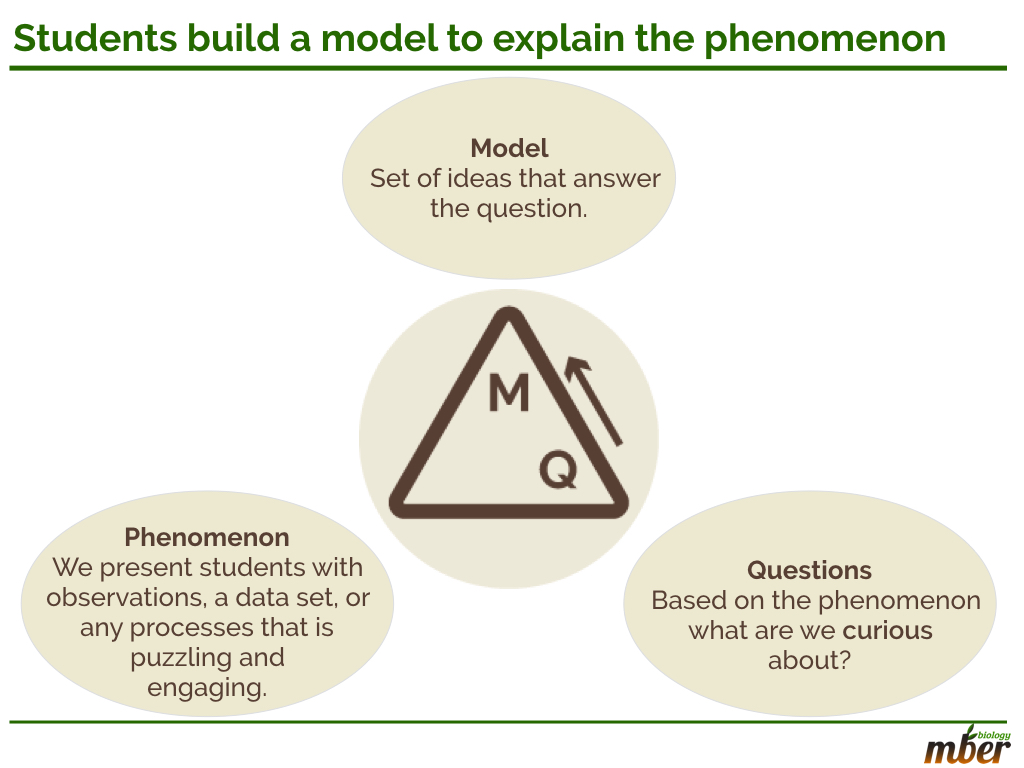
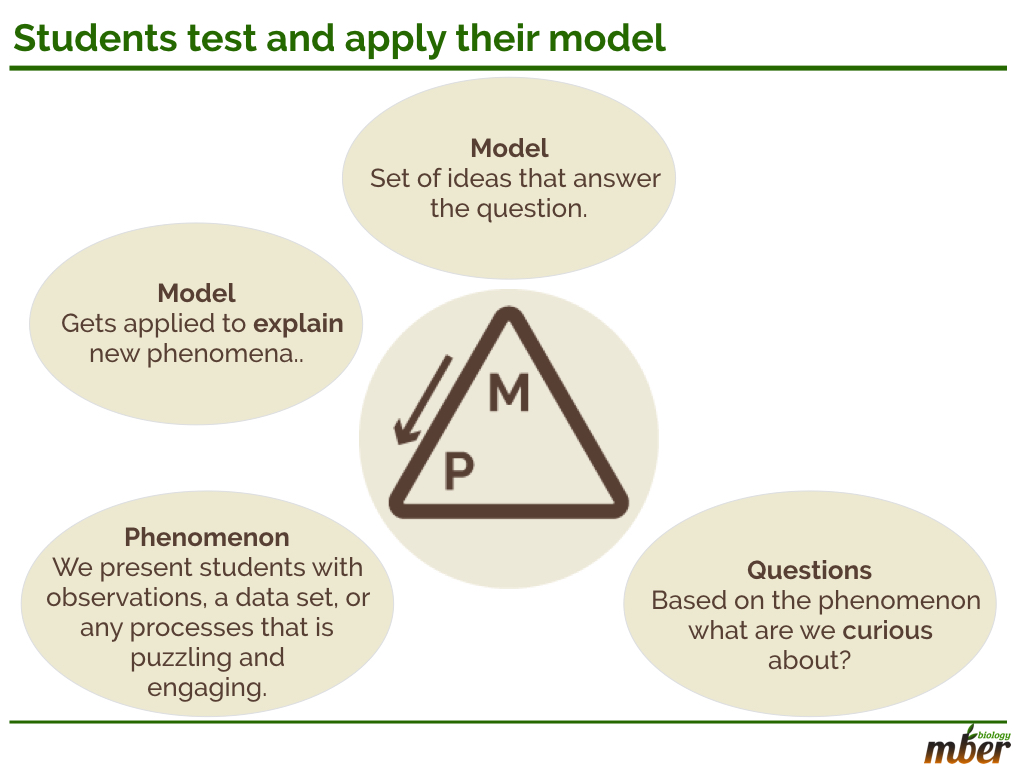
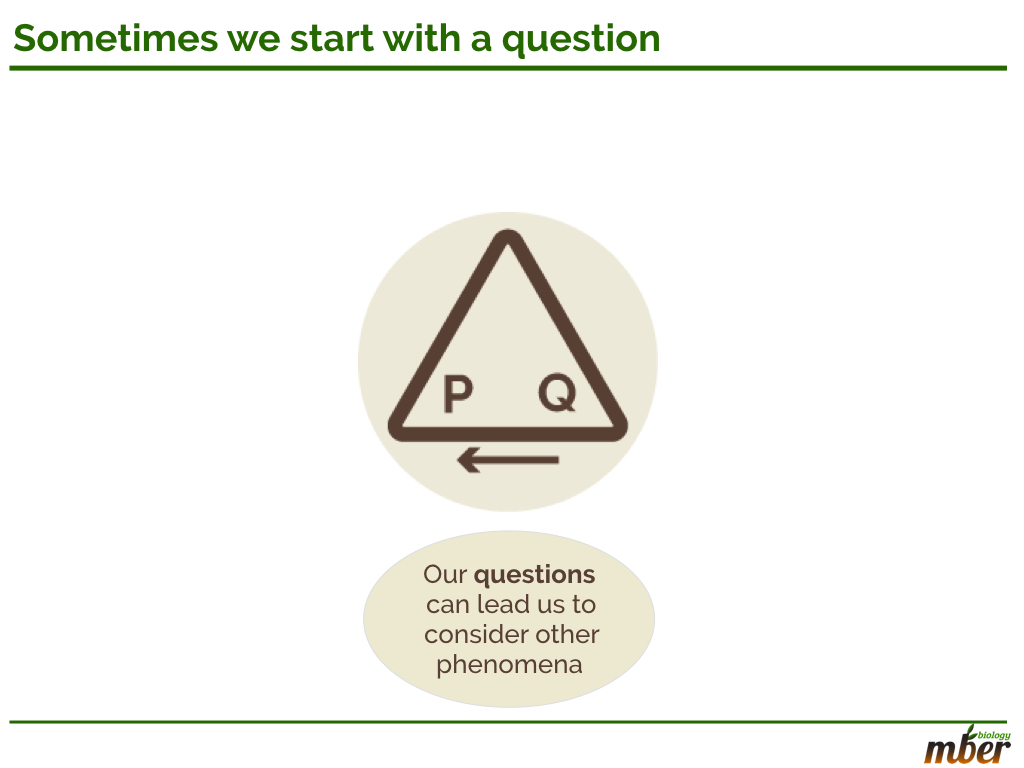
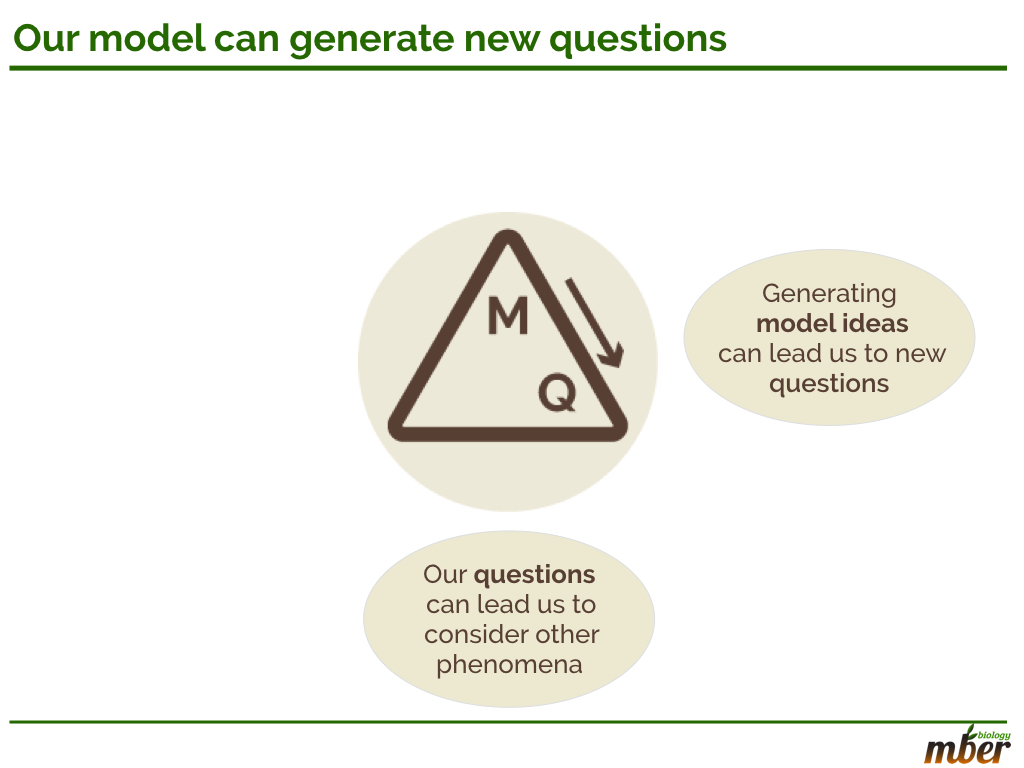
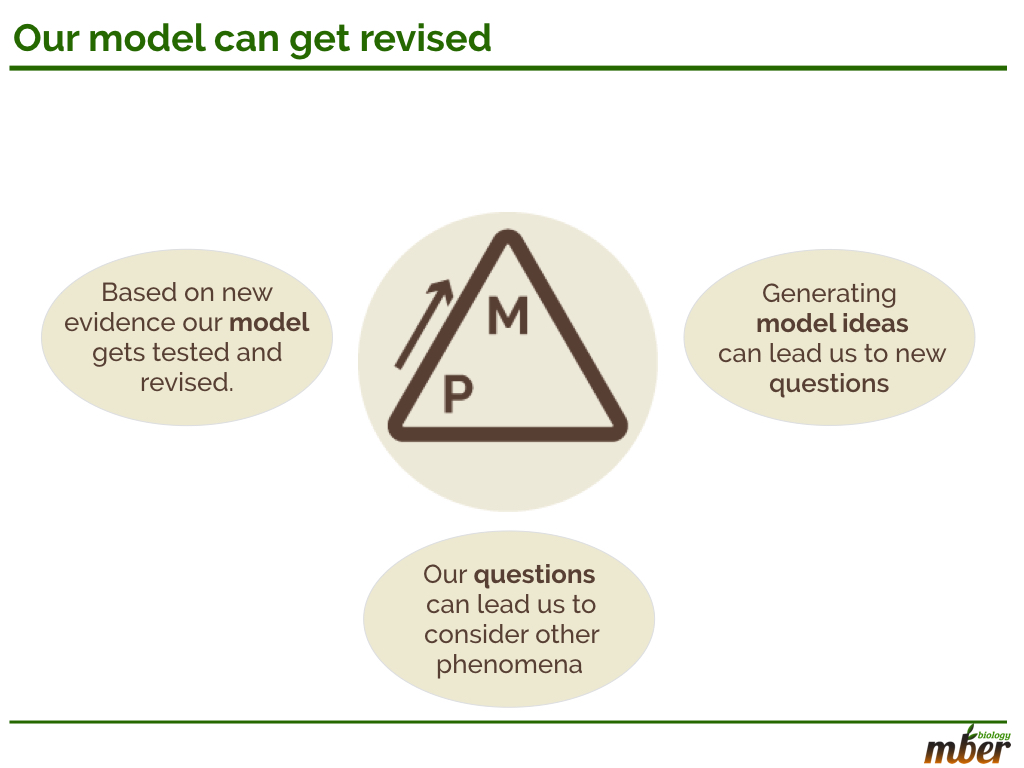
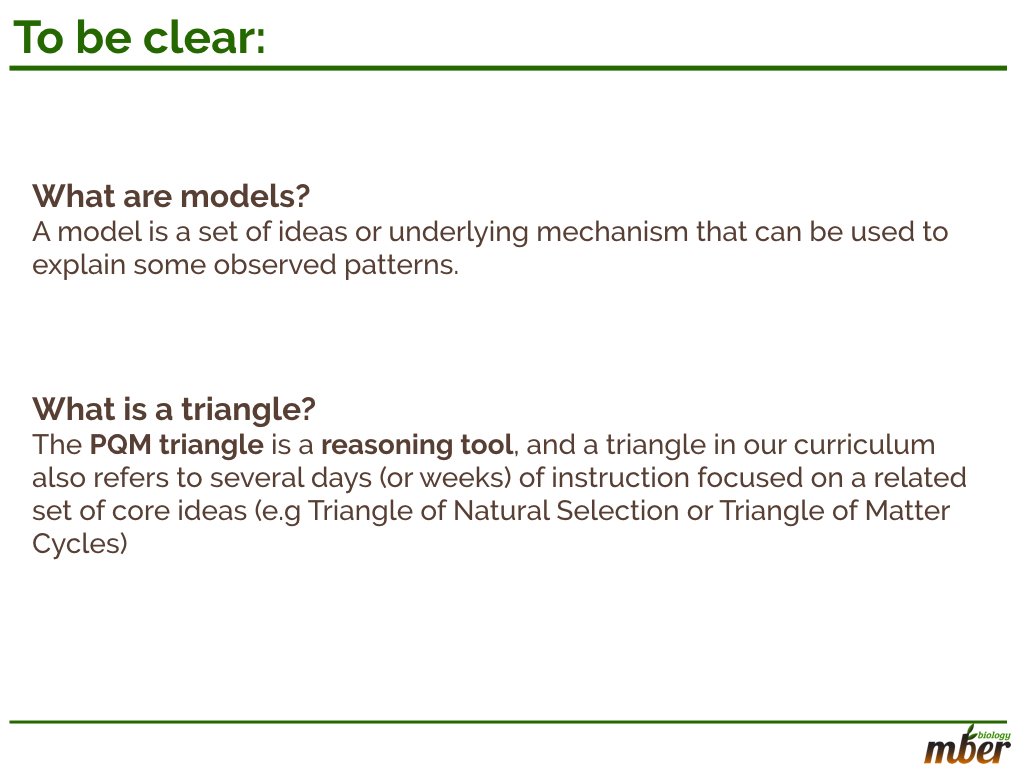
We use the PQM framework as an organizing structure throughout all of MBER Living Earth. Each portion of the curriculum can be illustrated on the triangle, reflecting where the class community is in their reasoning. For example, are we introducing a new phenomenon ("P" vertex)? Are we asking questions about the phenomenon ("P to Q" move along the side of the triangle)? The curriculum is thus chunked into segments not by time (i.e. 50 minute class periods) but by what we are doing around the triangle in that particular segment. We call these chunks "learning segments" to remind us of the goals we have for student reasoning that go beyond merely "covering" a topic. When you go into the model triangles you will see that the overviews of each triangle are organized and presented using the PQM framework.